Abstract
To test the hypothesis that adaptation protecting against acute effects of ambient ozone (O3) exposures develops in Los Angeles residents, human volunteers were exposed to 0.4 ppm O3 under conditions simulating ambient pollution exposures. Blood biochemical, pulmonary physiological, and clinical responses were assessed. Los Angeles residents (N = 6) showed only minimal clinical or physiological response to O3, while new arrivals (N = 9) showed significant losses in pulmonary function and a tendency toward increased symptoms. Most biochemical responses did not differ significantly between residents and new arrivals. These results agree with others in suggesting that exposures to elevated ambient concentrations of O3 produce adaptation in a least some residents of photochemical pollution areas. The underlying mechanisms and long-term consequences of such adaptation are unknown.
Full text
PDF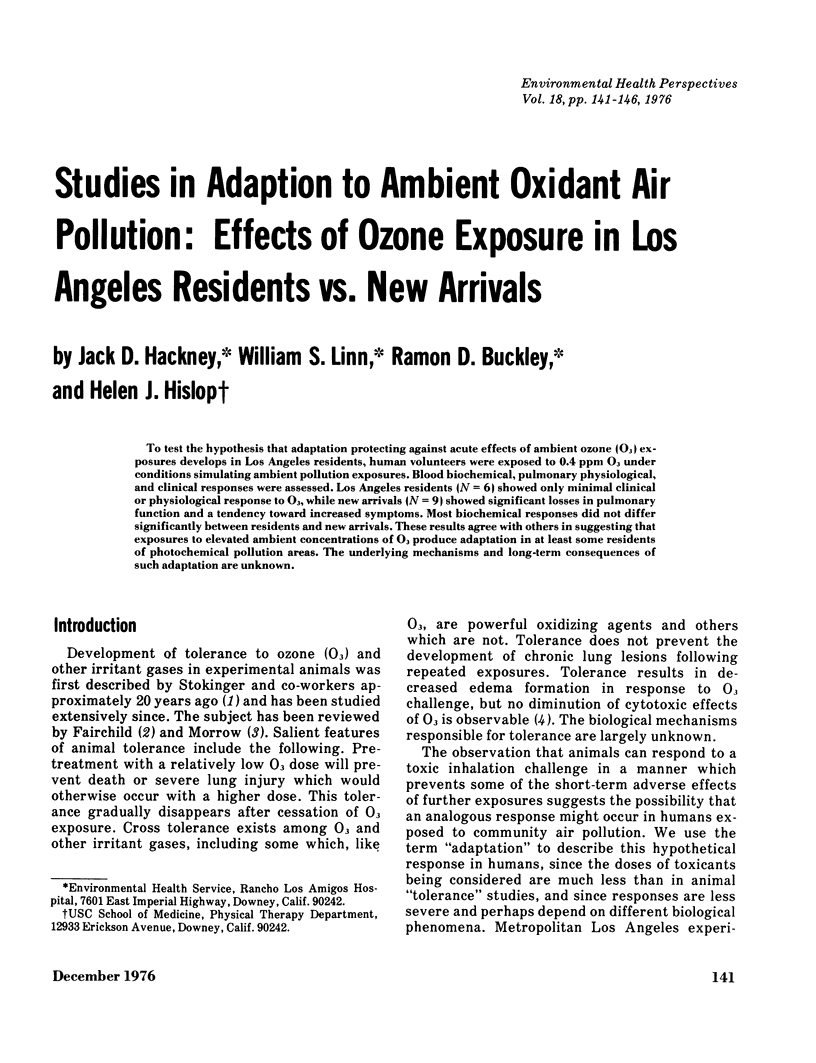
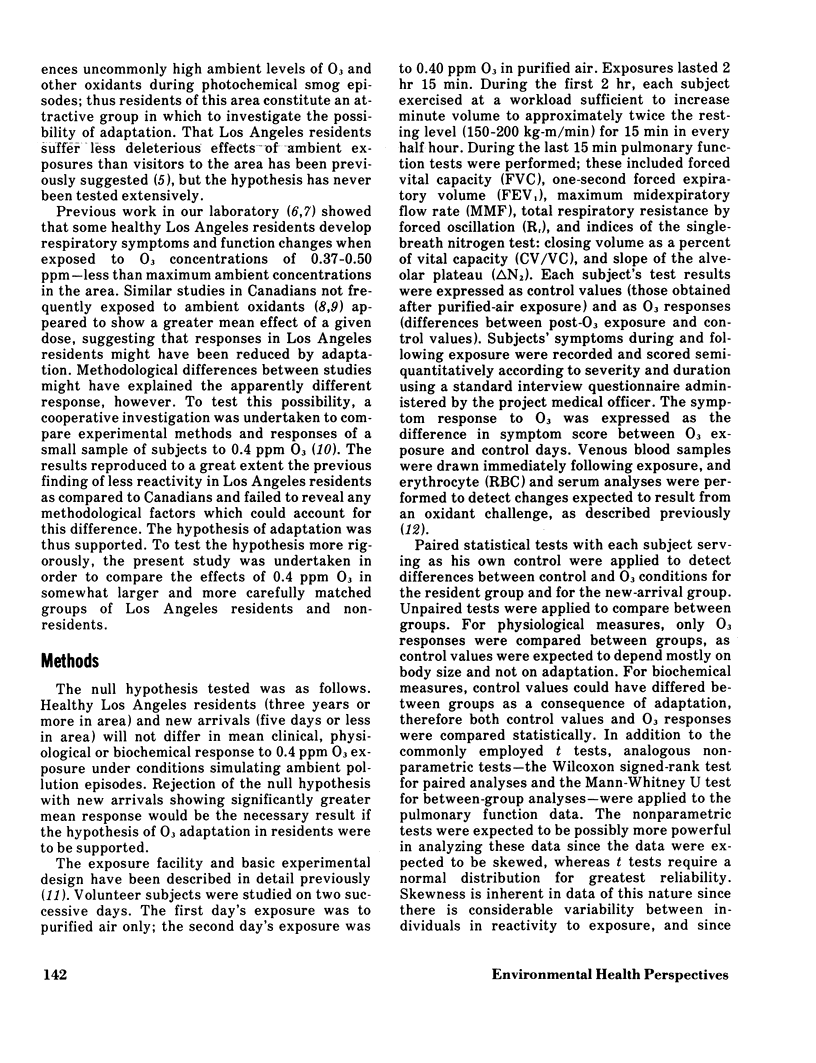

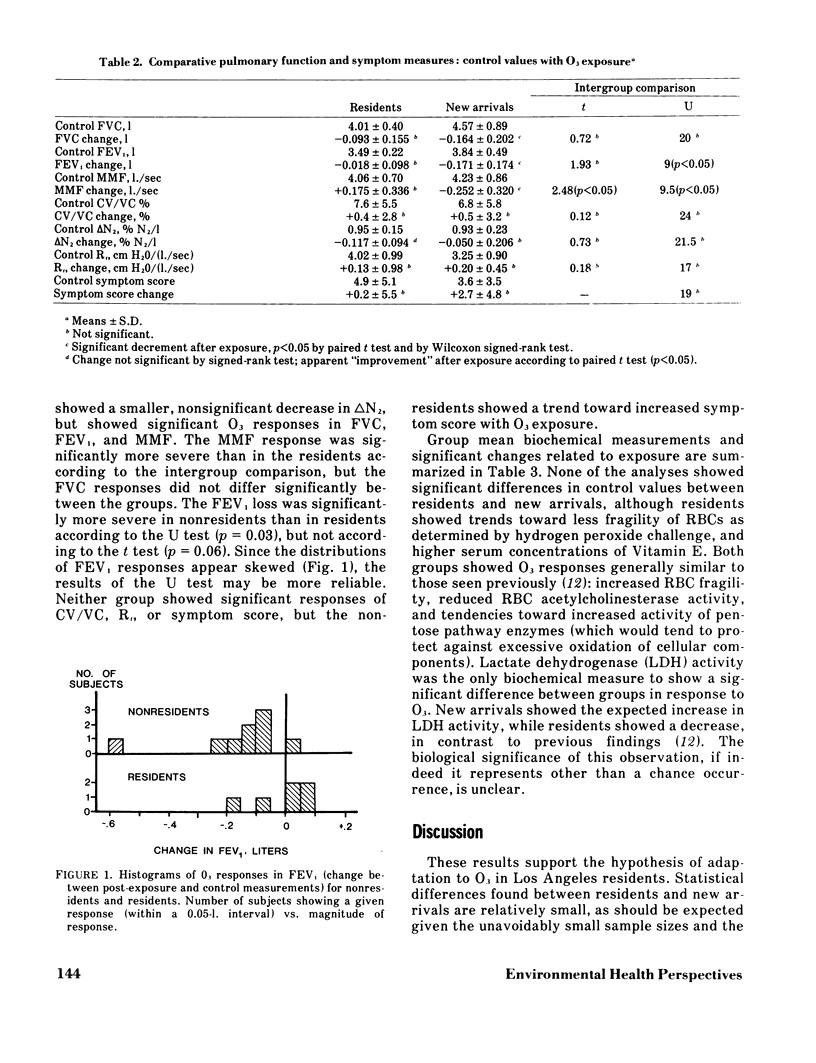
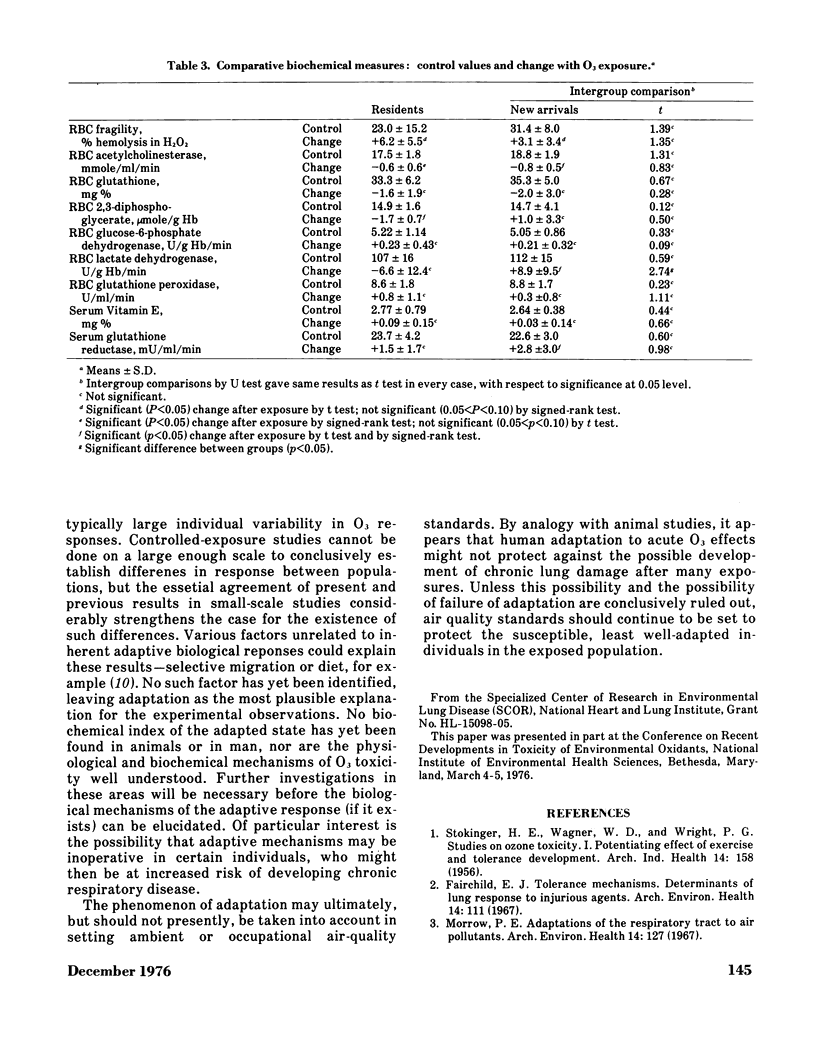
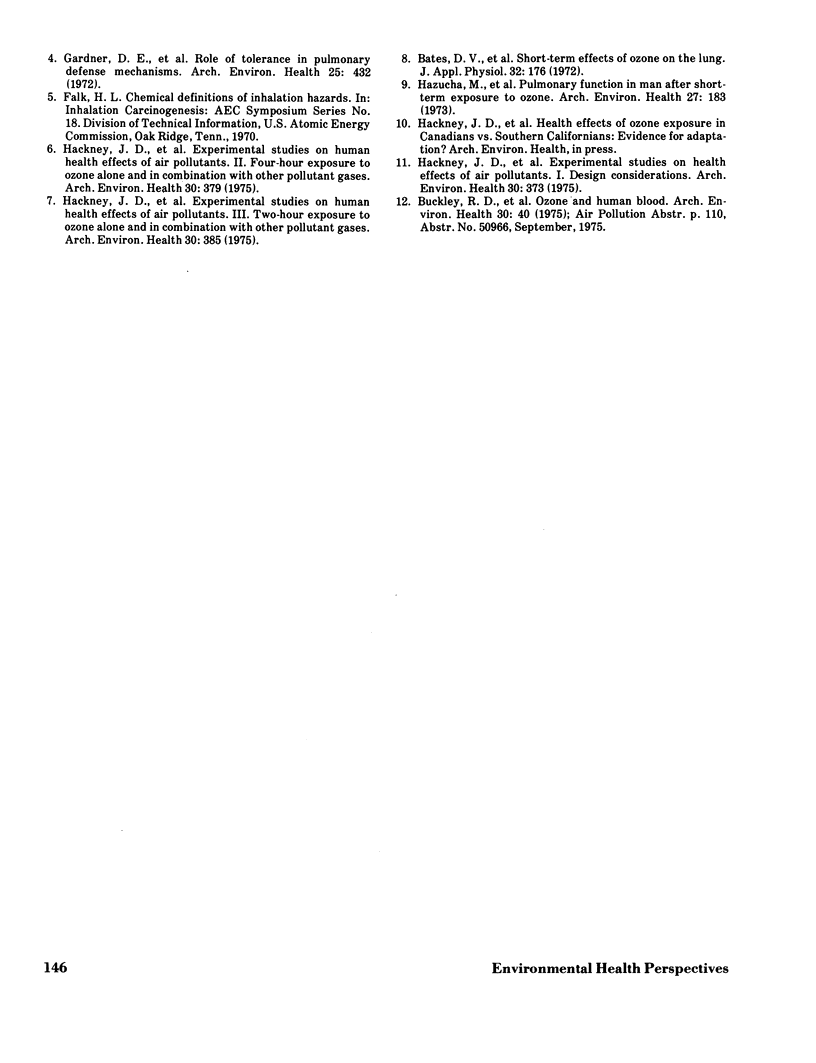
Selected References
These references are in PubMed. This may not be the complete list of references from this article.
- Bates D. V., Bell G. M., Burnham C. D., Hazucha M., Mantha J., Pengelly L. D., Silverman F. Short-term effects of ozone on the lung. J Appl Physiol. 1972 Feb;32(2):176–181. doi: 10.1152/jappl.1972.32.2.176. [DOI] [PubMed] [Google Scholar]
- Fairchild E. J. Tolerance mechanisms. Determinants of lung responses to injurious agents. Arch Environ Health. 1967 Jan;14(1):111–126. doi: 10.1080/00039896.1967.10664702. [DOI] [PubMed] [Google Scholar]
- Gardner D. E., Lewis T. R., Alpert S. M., Hurst D. J., Coffin D. L. The role of tolerance in pulmonary defense mechanisms. Arch Environ Health. 1972 Dec;25(6):432–438. doi: 10.1080/00039896.1972.10666199. [DOI] [PubMed] [Google Scholar]
- Hackney J. D., Linn W. S., Buckley R. D., Pedersen E. E., Karuza S. K., Law D. C., Fischer A. Experimental studies on human health effects of air pollutants: I. Design considerations. Arch Environ Health. 1975 Aug;30(8):373–378. doi: 10.1080/00039896.1975.10666728. [DOI] [PubMed] [Google Scholar]
- Hackney J. D., Linn W. S., Law D. C., Karuza S. K., Greenberg H., Buckley R. D., Pedersen E. E. Experimental studies on human health effects of air pollutants. III. Two-hour exposure to ozone alone and in combination with other pollutant gases. Arch Environ Health. 1975 Aug;30(8):385–390. doi: 10.1080/00039896.1975.10666730. [DOI] [PubMed] [Google Scholar]
- Hackney J. D., Linn W. S., Mohler J. G., Pedersen E. E., Breisacher P., Russo A. Experimental studies on human health effects of air pollutants. II. Four-hour exposure to ozone alone and in combination with other pollutant gases. Arch Environ Health. 1975 Aug;30(8):379–384. doi: 10.1080/00039896.1975.10666729. [DOI] [PubMed] [Google Scholar]
- Hazucha M., Silverman F., Parent C., Field S., Bates D. V. Pulmonary function in man after short-term exposure to ozone. Arch Environ Health. 1973 Sep;27(3):183–188. doi: 10.1080/00039896.1973.10666349. [DOI] [PubMed] [Google Scholar]
- Morrow P. E. Adaptations of the respiratory tract to air pollutants. Arch Environ Health. 1967 Jan;14(1):127–136. doi: 10.1080/00039896.1967.10664703. [DOI] [PubMed] [Google Scholar]
- STOKINGER H. E., WAGNER W. D., WRIGHT P. G. Studies of ozone toxicity. I. Potentiating effects of exercise and tolerance development. AMA Arch Ind Health. 1956 Aug;14(2):158–162. [PubMed] [Google Scholar]


